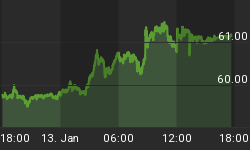A few weeks ago, Government Motors dropped a public relations bomb when new chief Fritz Henderson announced that the forthcoming Chevy Volt would get an astonishing 230 miles per gallon (that's 98 kilometers per liter, for our metric-system friends).
For those of you not yet familiar, the Volt is a plug-in hybrid car. The car runs primarily on electric power, with batteries charged overnight by simply plugging the car into an electrical outlet like a cell phone. Its gasoline engine is used only to charge the battery and supplement the power when the batteries run low.
Due in late 2010 at the earliest, GM is pinning the company's hopes in large part on the new technology and the associated PR bump of having the most fuel-efficient car offered by a mainstream company.
So, how about that 230 mpg claim?
We'll stop short of calling it a fabrication and instead chalk it up to a classic apples-to-oranges comparison. After all, the Volt will be powered more by coal than by oil. You see, the mileage claim is based in part on the idea that the average driver puts less than 40 miles per day on their car, and that because the Volt is plugged in overnight, it has enough juice to make it back and forth to work having barely sipped a drop of gasoline. But hop on the highway for a 230-mile ride to visit a client or take a vacation, and you're likely to use quite a bit more gas than your window sticker would have you think. Probably by an order of magnitude.
United States EPA mileage guidelines are based on a bunch of hypothetical "typical" driving patterns. And the makers of conventional and plug-in hybrid cars are lobbying hard to change those patterns to reflect well on the broad range of possible outcomes these funky two-mode drive trains could have, with their on-again-off-again relationship with the gas tank. And the GM announcement of 230 mpg is based on some unpublished, unverified agreement the carmaker claims to have reached with its government sibling, the EPA, on how to judge the car's performance in the "City."
However, if GM's claims prove true that operating the car off the electric grid costs about one-third of what it costs on gasoline at today's prices, it won't matter what formula the EPA uses. There are sure to be many more PR moments between now and when Volts are a common sight on the road, including years of arguments about the environmental impact of moving the burden of powering a car from oil to a predominantly coal-powered electrical grid. But more electric cars are coming, one way or another, and the impact will be major on the economy and the environment.
GM is by no means the only car company working on a mostly electric or all-electric vehicle. In our inaugural issue of Casey's Extraordinary Technology, we covered the Fisker Karma, a high-end sports car plug-in that is part of a class of flashy racers based on similar technologies, including the Ronn Scorpion and Tesla Roadster.
On the more affordable front, virtually every major car company from Nissan to Ford has announced plans to add or expand their electric line-up. And many of them will have the jump on GM in timing, so it remains to be seen how much the Volt will actually help GM in the long run. But for now, it makes for some good headlines - even if they don't make a lot of sense on closer examination.
And the race is only beginning. Car companies are in a scramble to buy and build the components that will power tomorrow's cars. They are building so furiously that the cars are often announced before all the parts have even been invented.
Tesla Motors notoriously sold out their entire first year's volume of cars well before developing a transmission able to withstand the incredible torque these electric motors can put out, and delayed the initial shipments by months as a result. And according to recent statements from GM, some parts of the Volt are not yet fully baked, and there is a risk they won't all be complete by the currently scheduled launch date.
Despite GM's struggles to bring the Volt to market, there's no doubt that technology is changing the automotive industry forever and that mpg will soon be a wholly inadequate metric on which to judge the efficiency of a car. You can expect GM's inflated claims to be reduced when the Volt finally hits showroom floors in a few years. But you can also expect shockwaves to run through the industry and the economy as virtually every component of the car, shy of the seats, is rethought over the next decade. Fortunes will be made and lost in a way that has not been seen in the automotive industry in half a century or more.
The inaugural edition of Casey's Extraordinary Technology debuted in July. One early subscriber wrote in, "FYI, just made my subscription fees - flipped my Sierra Wireless shares and made a nice 28% in what, a bit over two weeks? Nice start to this newsletter, and kudos to the author."
If you like tech, or more to the point, the money that is to be made from tech - now the single largest sector of the U.S. economy by a wide margin - we offer to let you try Casey's Extraordinary Technology risk-free for 3 full months, with our 100% money-back guarantee. For more info on the newsletter and our technological wunderkind, Adrian, click here.]
















